![]()
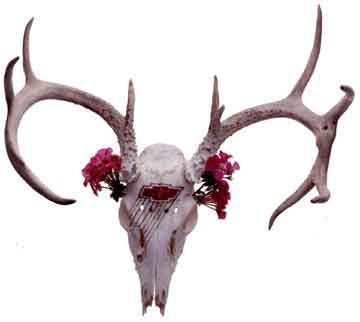
Cultural Appropriations:
• Painted animal scull. Seen in shamanic traditions of Plains Indians and Bon of Tibetian plateau (among others).
• Deer as totem: reflects South-Indian folklore of the "Four noble beasts." (Hortse, cow, dog and deer) and the honored place of deer in Buddhist mythology, viz. early incarnation of the Buddha & the place of his first sermon (the "Deer-park," )
• Totemic symbol: Used in 20th century American corporate witchcraft.
• Flower placement: derived from Polynesian and American Hipi tradition.
CULTURAL APPROPRIATION
To understand the Afterculture It is crucial to see that it is a vision of a future already being shaped--and lived--right now. Anthropological accuracy dictates that the future will, in all likelihood, continue whatever trajectory has been started in the present.
This raises the sticky issue of cultural appropriation. We live in a time when great numbers of European-Americans, profoundly discontented with consumer culture, are turning to Traditional people for guidance. This search is often a two-dimensional attempt to acquire "soul" in the same way one acquires an SUV. But Traditionals themselves are divided in their response. Some see themselves as victims of a grotesque rip-off, while others welcome the opportunity to draw the conqueror into the Ways of Human Being People.
There is probably no single "right" response. But one thing is certain. It is what is happening. Cut off from authentic, sacred, earth-honoring life, European peoples are turning to Native peoples and Native wisdom. We were all Native peoples once, but Europeans, separated from their own tribal wisdom by millennia, turn spontaneously to the aboriginal peoples of this land for a living transmission. And while there is also a strong intuition that an earth-honoring life grows right from the place where your feet touch the ground, from a "Spirit of Place," to move in harmony with its rhythms, it is wise to turn to those already more in tune with it.
The Afterculture is getting its power with utter pragmatism wherever it can find it. This pragmatism is actually a quality of many Traditional peoples. I once saw a beautiful Lakota beaded glove. On its gauntlet was a most un-Lakota design, which decoded as a portion of a flour company logo, obviously copied from a found scrap of white man's belonging. It was no doubt a last-ditch attempt to appropriate some of his bewildering magic
The people of the Afterculture are like this. They are shaping a distinctive culture that reflects all of the influences flowing into them. On a deeper level, the people of the Afterculture are returning to archetypal patterns which transcend source. People around the world, strangers to each other all, have carved trees into totems and raised them, cut spirals in stones, hung feathers, made stone circles. There is, of course, an appropriate respect due to certain symbols, and that understanding would be manifested by the people of the Afterculture, just as the Lakota artisan was honoring the power he believed was in the flour-logo. A sensitive awareness of a symbol's resonances is the essential thing. (See notes accompanying illustrations)
Still, it is entirely understandable that many Native Americans could perceive the Afterculture as one more European heist. But that is to miss the point altogether. The Afterculture is part of a great stream of prophecy declaring that the spirit of the Hopi and the Pomo and the Lenni-Lenapi (and the Kung and the Celt and the Abo ) will, in the end, triumph. As Lao Tzu said,
The soft overcomes the hard, the yielding undermines the firm.
The people of the Afterculture are not ripping off Native Americans. They ARE Native Americans. Wiser, with a greater store of knowledge, with a restored spiritual vision that has passed through the Fire, the good guys have emerged. Not "won." That kind of thinking is what got us into trouble in the first place. Emerged. For the benefit of All Our Relations.
![]()
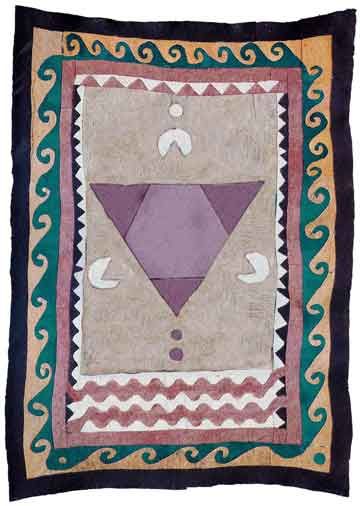
Cultural Appropriations:
• Border motif, Scythian / Minoan.
• Totem design: (Modified Star of David): Hebraic; Islamic; Tantric; modified to reflect Quantum physics
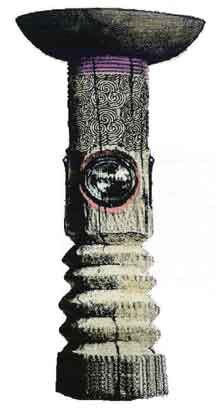
Cultural Appropriations:
• Spiral motif: Celtic, Native American, etc.
• Ritual use: derived from early Christian & pre Christian babtism
• Decorative element: 20th century automotive lighting technology.
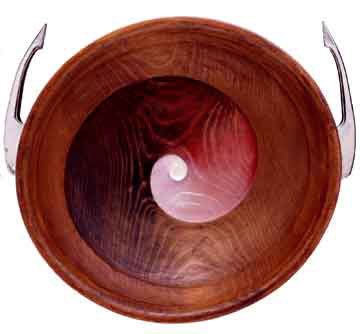
Cultural Appropriations:
• Spiral motif: The "three Gunas" of Vedic cosmology.
• Ritual use: Derived from Kung practices.
• Decorative handles: 20th century automotive technology.
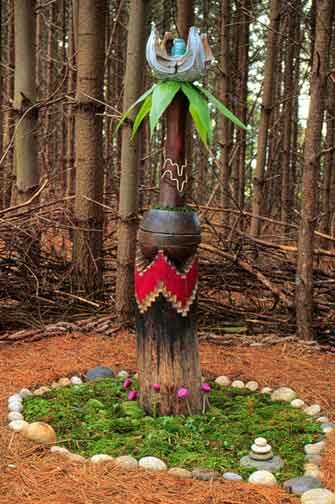
Cultural Appropriations:
• Overall design: Derived from Tibetan "Thunderbolt" or Dorje
• Ritual use: Pre-Kurgian cultures of Europe, possibly also Nasca culture of Peru
• Decorative motif: Elemental "earth" pattern from Alchemical tradition.
• Tip: 20th Century power company technology (Insulator).
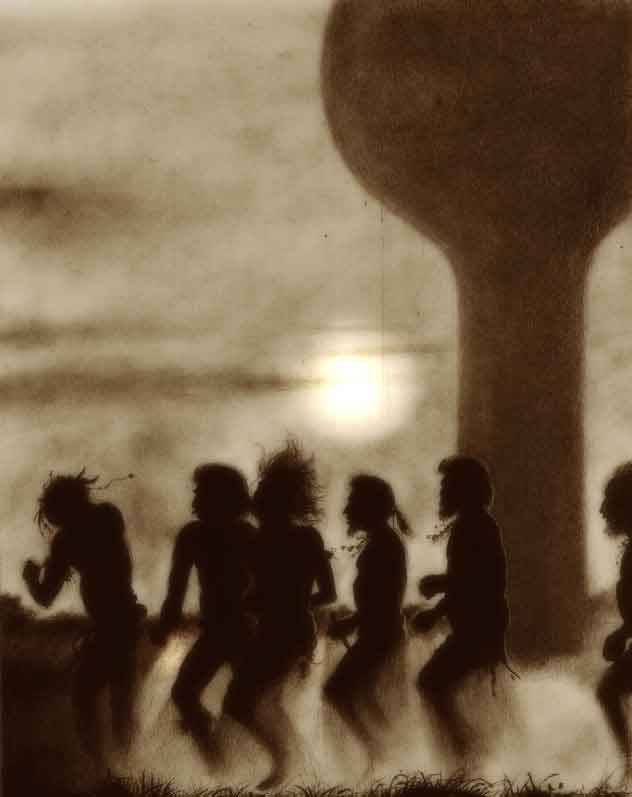
To move beyond the internal stresses that bind euro-culture, THE AFTERCULTURE must have a profound spiritual foundation and deep attunement to the land it inhabits. That would make it indigenous, shaped by Spirit-of-Place. The Indian Peoples were children of that spirit, molded by it into certain archetypal forms. If we allow ourselves to become natives of America as well, we will find ourselves naturally moving into similar grooves, not in imitation, but because we finally will be hearing--and sometimes dancing--to the same beat.
